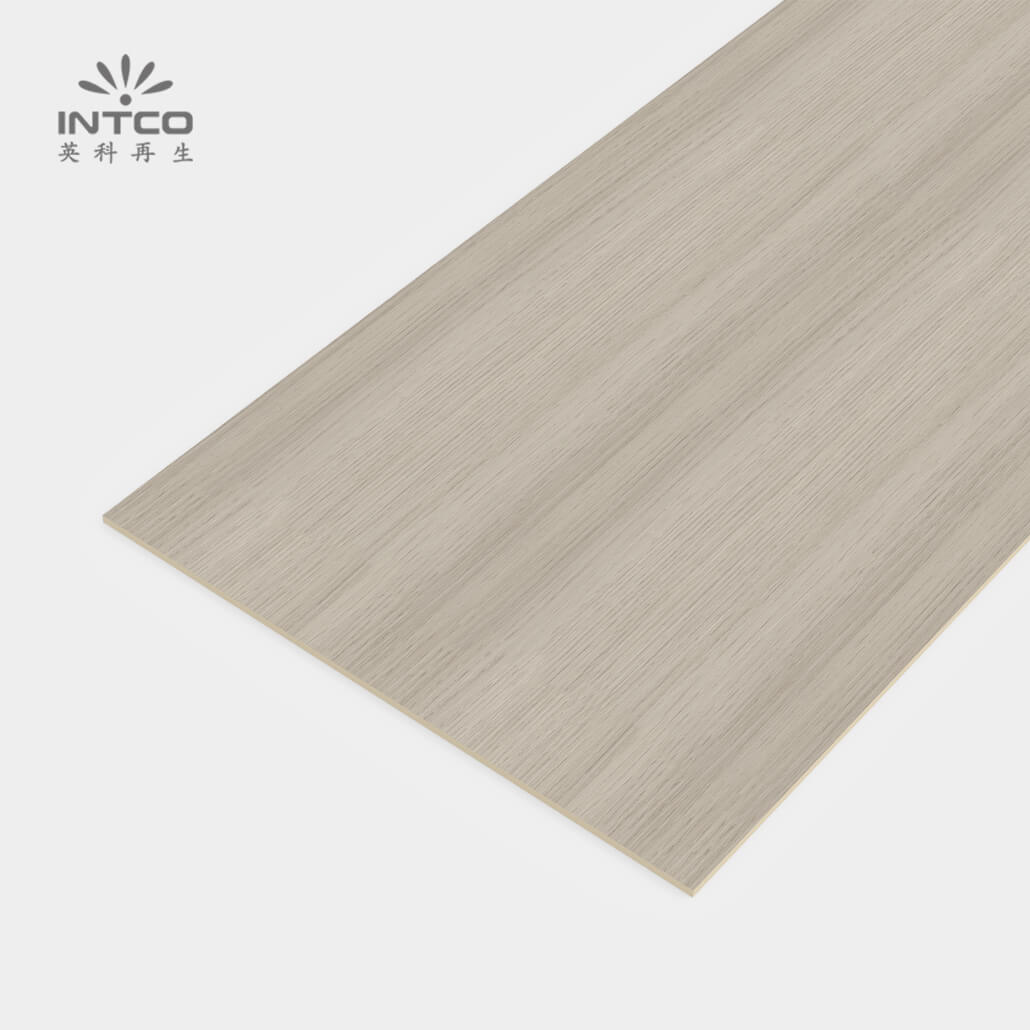Understanding Wall Cladding
Definition and Purpose
Wall cladding is the method of applying one material over another to form an exterior surface or layer. This technique serves both decorative and practical functions, giving buildings a polished appearance while safeguarding the underlying structure from environmental factors. Various materials such as wood, stone, metal, and vinyl can be used for wall cladding, each providing distinct characteristics and advantages.
Intco Decor is a brand of Intco Recycling, Intco Recycling is a high-tech manufacturing company specializing in recycling. Since our founding in 2002, we have been one of the leaders in the field of plastic sustainability. We are committed to using cutting-edge recycling and production technologies to build a circular economy and recycle high-quality plastics.
Historical Overview of Wall Cladding
The practice of wall cladding dates back centuries, with early applications seen in ancient civilizations where materials like stone and wood were used to fortify and beautify structures. Over time, technological advancements and the evolution of architectural styles have expanded the range of materials and techniques used in wall cladding. Today, it is a fundamental aspect of modern construction, combining traditional craftsmanship with contemporary innovation.
Benefits of Wall Cladding
Enhanced Aesthetic Appeal
Wall cladding provides homeowners with a myriad of design options to enhance the visual appeal of their properties. Whether opting for the natural beauty of stone, the classic charm of brick, or the modern look of metal, wall cladding drastically transforms a building’s exterior. This customization enables homeowners to reflect their personal style, making their homes not only inviting but also distinctive.
Increased Property Value
Investing in wall cladding can significantly raise a property’s market value. Enhanced curb appeal and improved structural integrity contribute to a higher resale value. Potential buyers are often attracted to homes that are not only beautiful but also well-maintained and durable, making wall cladding a smart investment for homeowners looking to maximize their returns.
Energy Efficiency and Insulation Advantages
Wall cladding materials frequently possess insulating features that enhance a home’s energy efficiency. When correctly installed, cladding aids in retaining heat during the winter months and maintains cooler indoor temperatures in the summer. This decreases the dependence on heating and cooling systems, leading to lower energy expenses. Moreover, it promotes environmentally friendly living by minimizing carbon emissions.
Durability and Longevity
Many wall cladding materials are designed to withstand harsh weather conditions, including extreme temperatures, heavy rain, and strong winds. Materials like stone, metal, and high-quality vinyl are resistant to wear and tear, ensuring the longevity of the cladding. This durability means homeowners can enjoy the benefits of a beautifully clad home for many years with minimal need for replacement or repair.
Low Maintenance Requirements
One of the notable advantages of wall cladding is its low maintenance requirements. Unlike traditional painted surfaces that require regular upkeep, cladding materials like vinyl, brick, and metal often only need occasional cleaning to maintain their appearance. This ease of maintenance frees up homeowners’ time and reduces the long-term costs associated with home exterior upkeep.
Choosing the Right Wall Cladding for Your Home
Assessing Your Needs
When selecting wall cladding for your home, it’s essential to start by evaluating your specific needs. Consider what you want to achieve with the cladding, whether it’s enhancing the aesthetic appeal, improving insulation, or increasing the durability of your exterior walls. Different materials offer varied benefits, so understanding your priorities will help in making an informed decision. For instance, if you live in an area prone to harsh weather, you might prioritize materials known for their weather-resistant properties.
Budget Considerations
The budget is a significant factor in deciding on wall cladding. It’s essential to ascertain the amount you can afford to spend on both materials and installation. Although some options such as natural stone and hardwood may be pricier, they often offer long-term savings due to their durability and low maintenance needs. Conversely, materials like vinyl and PVC might be less expensive upfront but should still fulfill key performance and aesthetic criteria. Striking a balance between cost and quality is crucial for making a wise investment.
Climate Suitability
The climate in which you live can significantly affect the performance of your chosen wall cladding material. Some materials are better suited to withstand specific environmental conditions. For instance, metal cladding works well in areas with extreme weather due to its resilience against rust and corrosion. Meanwhile, wood and timber cladding might be more suitable for regions with milder climates, provided they are treated to resist moisture and insect damage. Assessing the climatic challenges your home faces will help in selecting a material that ensures durability and longevity.
Design Preferences and Compatibility
Wall cladding should complement the architectural style of your home while fulfilling its functional roles. Determine whether the cladding needs to match existing features or if it should stand out as a focal point. Consider the various textures, colors, and patterns available in cladding materials. For example, stone cladding can add a rustic charm, while aluminum can complement a modern, sleek look. Compatibility with other elements of your home’s design, such as windows, doors, and landscaping, will result in a harmonious and attractive exterior.
Installation Process of Wall Cladding
Preliminary Preparations
Proper preparation is critical to ensuring the successful installation of wall cladding. Before any material is applied, the surface must be prepared thoroughly to ensure a secure and lasting attachment.
Surface Cleaning
The initial phase in getting ready for wall cladding installation entails cleaning the surface. This involves removing dirt, debris, and any existing finishes to make sure the new cladding sticks properly. The process may include pressure washing and scrubbing to get rid of mold, mildew, or any substances that might hinder adhesion. Having a clean, smooth surface is crucial for avoiding future issues and ensuring the cladding’s durability.
Measurement Accuracy
Accurate measurements are paramount when installing wall cladding. Precise measurement of the walls ensures that the cladding materials fit perfectly without gaps or overlaps, which can compromise aesthetics and functionality. Using proper tools and techniques to measure the area, including accounting for windows and other openings, will facilitate a seamless installation process. Double-checking measurements can save time and materials by reducing errors that could necessitate adjustments or reinstallation.
Professional Installation vs. DIY
When it comes to installing wall cladding, homeowners must decide between professional installation and a DIY approach. Each option has its benefits and drawbacks, depending on the homeowner’s skill level, the complexity of the project, and budget constraints.
Professional installation guarantees a higher standard of workmanship, as experienced contractors are familiar with industry best practices and can often complete the project more quickly and efficiently. This is particularly beneficial for more complex materials, like natural stone or metal, which require specialized tools and expertise. Professionals also typically offer warranties on their work, providing peace of mind regarding the durability and quality of the installation.
On the other hand, opting for a DIY installation can be a more budget-friendly choice for individuals who possess the requisite skills and available time. This method enables homeowners to cut down on labor expenses while experiencing the satisfaction of finishing the project on their own. Nevertheless, it also carries certain risks, such as the possibility of incorrect installation, which could result in expensive repairs or replacements in the future.
In conclusion, whether choosing to undertake the project yourself or hiring a professional, careful planning and consideration of the specific requirements for wall cladding will ensure a successful and rewarding enhancement to your home’s exterior.
Maintenance Tips for Prolonged Durability
Regular Cleaning Practices
To ensure the prolonged durability of wall cladding, regular cleaning practices are essential. Depending on the material, you may use a mix of gentle cleaning solutions and methods. For example, vinyl cladding can often be cleaned with a simple soap and water solution, applied using a soft brush or cloth to remove dirt and grime. Metal cladding may require a specific cleaner designed to prevent corrosion. Equally important is rinsing off any cleaning agents thoroughly to avoid residue build-up, which can attract dirt and diminish the material’s appearance over time. Routine cleaning not only preserves the aesthetic appeal but also helps in identifying any potential issues early.
Repairing Minor Damages
Minor damages to wall cladding can occur due to various factors such as weather, impacts, or wear and tear. Addressing these small issues promptly is crucial to maintaining the cladding’s integrity. For example, small cracks or chips in stone or brick cladding can be repaired using appropriate fillers that match the material. Metal cladding may develop minor dents or scratches, which can often be fixed with specialized tools and touch-up paint. Vinyl cladding might experience slight deformations or punctures that can be corrected with patch kits. Timely repairs prevent minor issues from escalating into major problems, ultimately safeguarding the structure beneath the cladding.
Protective Coatings and Treatments
Applying protective coatings and treatments plays a vital role in prolonging the lifespan of wall cladding. Numerous materials gain from an added layer of protection against diverse environmental factors. For example, wood and timber cladding should be treated with sealants or stains to prevent moisture and insect damage. Metal cladding can be coated with paint or anti-corrosion treatments to improve its resistance to rust and environmental pollutants. Although vinyl and PVC cladding might not need frequent treatments, keeping it clean and free from cracks is crucial for maintaining its protective properties. Utilizing the appropriate products and following application recommendations can greatly enhance the durability and longevity of your wall cladding.
Summary: Making an Informed Decision About Wall Cladding
In summary, selecting wall cladding for your home involves multiple considerations including aesthetic appeal, property value, energy efficiency, and durability. Understanding the different types of materials available, from natural stone and brick to metal and vinyl, helps in making a choice that aligns with your specific needs, budget, and environment. Regular maintenance, such as cleaning, repairing minor damages, and applying protective treatments, ensures that your investment remains an enduring asset to your property. By thoroughly evaluating your options and proactively maintaining your chosen cladding, you can enjoy a beautiful, efficient, and long-lasting exterior for many years to come.
One-stop solutions for interior and exterior decorative materials, Intco Decor proudly stands at the forefront of the decorative materials industry, offering a comprehensive suite of solutions with multi-material, multifunctional recycled materials. Driven by proactive innovation, continue to promote plastic recycling technology, become a global leader in resource recycling, and contribute to sustainable development in the new global carbon economy! Intco Recycling, Renewing the World.
If you are interested in our products, please contact us, we will give you detailed answers and recommend suitable products for you according to your needs.









